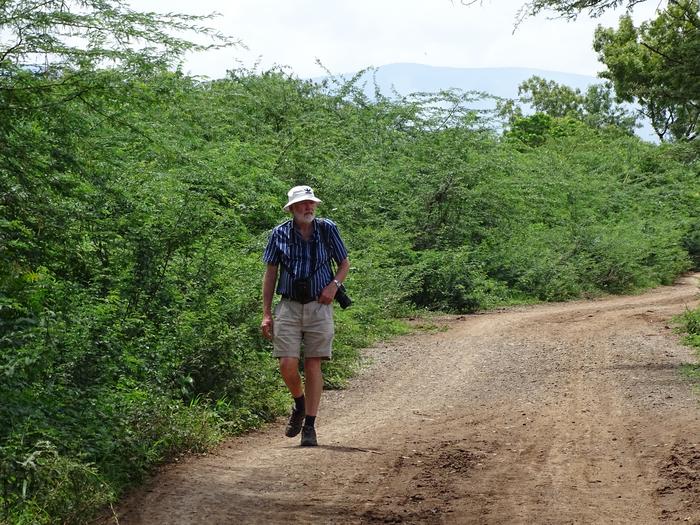
The Unintended Consequences of Invasive Species: A Comprehensive Study on Prosopis in Eastern Africa
In the intricate tapestry of ecosystems, the introduction of non-native species can often yield unintended and profound repercussions. A recent publication underscores this phenomenon, focusing specifically on the invasive Prosopis species in Eastern Africa. This pivotal research not only explores the ecological and socio-economic impacts of these trees but also serves as a cautionary tale about the complexities of species management across different landscapes.
Prosopis, a genus predominantly originating from the Americas, was introduced to Eastern Africa during the late 20th century. The intention behind this introduction was noble; it was lauded for its potential benefits, such as providing timber, fodder, and shade, as well as for combating desertification. However, as decades have passed, it has become increasingly evident that these well-meaning efforts have led to dire ecological consequences. This complexity underlies the essence of the newly released book, “The Ecology and Management of Invasive Prosopis Trees in Eastern Africa”, which discusses the sequential chapters of this ecological saga.
One of the most alarming dimensions of the Prosopis invasion is its rapid proliferation across vast tracts of land. Current estimates suggest that these trees have invaded nearly ten million hectares of land in Eastern Africa. The ecological ramifications of such widespread distribution cannot be overstated. Prof. Brian van Wilgen, one of the editors of the aforementioned book and a noted authority in invasion biology, describes this phenomenon as a classic case of unanticipated negative consequences arising from an initially beneficial introduction. The once-cherished Prosopis, now viewed through a lens of destruction, has altered the very fabric of regional ecosystems.
In these densely invaded landscapes, Prosopis trees have established dense thickets, making it increasingly difficult for herbivorous mammals to access grazing areas or essential water sources. This alteration in habitat leads to significant declines in biodiversity and fundamentally impacts the livelihoods of rural communities that depend on these ecosystems. Factors such as competition for resources and structural changes in the landscape have transformed once-open savannas into impenetrable thickets, resulting in a cascading effect on local fauna.
Another profound impact lies in the water demand of the Prosopis trees. Research indicates that in heavily invaded regions, these trees can absorb nearly 50% of the annual rainfall. This unyielding consumption of moisture exacerbates the already precarious circumstances of groundwater resources, significantly affecting agricultural practices and drinking water availability for local communities. The interplay between climate change and invasive species creates a perfect storm that threatens the sustainability of both ecology and human populations in the region.
As the study meticulously outlines, the invasion is far from reaching its peak; it is still in early stages. If left unchecked, the potential spread of Prosopis could extend to cover three-quarters of Kenya and nearly half of Ethiopia and Tanzania, with an estimated economic burden of $375 million annually. This forecast underscores the urgency for effective management strategies that can curtail the spread of this invasive species and mitigate its impacts on local ecosystems and economies.
The book also serves as a stark reminder of the historical context surrounding the introduction of these invasive species. The 1970s to the 1990s saw an emergence of international aid efforts aimed at mitigating desertification in Africa, often through the introduction of species like Prosopis. However, this endeavor highlights a crucial disconnect between short-term objectives and long-term environmental health. The urgency to address immediate ecological challenges should never overshadow the need for sustainable practices and informed decision-making.
Prof. Philip Hulme, another eminent contributor to the discourse on invasive species, emphasizes the repercussions of policies that favored immediate gains over sustainable outcomes. In his foreword to the book, he articulates the robust evidence presented within its chapters, warning against the pitfalls of considering Prosopis species as multipurpose solutions to environmental problems. This echoes a broader theme in ecology—integrating scientific understanding with policy-making to avoid the pitfalls of ecological mismanagement.
The academic community has been largely absent in discussions surrounding invasion biology in Africa. The book aims to bridge this gap by becoming a primary resource for researchers, policymakers, and decision-makers who grapple with the consequences of invasive species. Given the minimal representation of African research in the broader narrative of invasion biology, this compilation is a significant contribution; its insights are invaluable for informed management and conservation strategies.
The collaborative effort underpinning the research, combining perspectives from six universities and eight institutes across various countries, exemplifies the need for a unified approach in addressing transboundary environmental issues. Such alliances underscore the shared responsibility in combating invasive species and highlight the integral role of community engagement in ecological management.
In conclusion, “The Ecology and Management of Invasive Prosopis Trees in Eastern Africa” stands as an essential reference that encapsulates the complexities and challenges surrounding invasive species management. It is a clarion call for heightened awareness and action—emphasizing that conservation efforts do not solely rest on the shoulders of policymakers, but require the involvement and commitment of the scientific community, local stakeholders, and global partners alike. The lessons drawn from the Prosopis invasion are paramount in guiding future initiatives, aiming to prevent history from repeating itself in the face of ecological challenges.
Subject of Research: Invasive Prosopis Trees in Eastern Africa
Article Title: The Unintended Consequences of Invasive Species: A Comprehensive Study on Prosopis in Eastern Africa
News Publication Date: October 2023
Web References: CABI
References: DOI 10.1079/9781800623644.0000
Image Credits: Credit: Jano Barnard
Keywords: Invasive Species, Prosopis, Ecology, Eastern Africa, Invasion Biology, Environmental Management, Biodiversity, Climate Change, Ecological Impacts, Policy-Making, Sustainable Practices, Community Engagement.
Tags: Biodiversity LossClimate Change InteractionCommunity Engagement.Eastern Africa EcologyEcological ImpactEnvironmental ManagementInvasive SpeciesPolicy-Making FailuresProsopis InvasionSocio-Economic ImpactTransboundary CollaborationWater Resource Depletion





